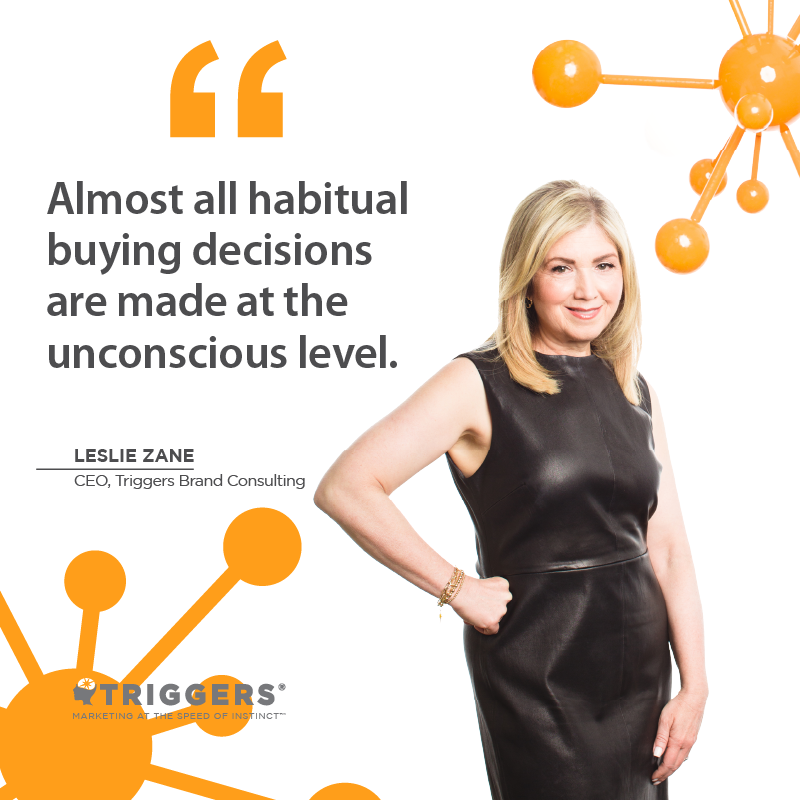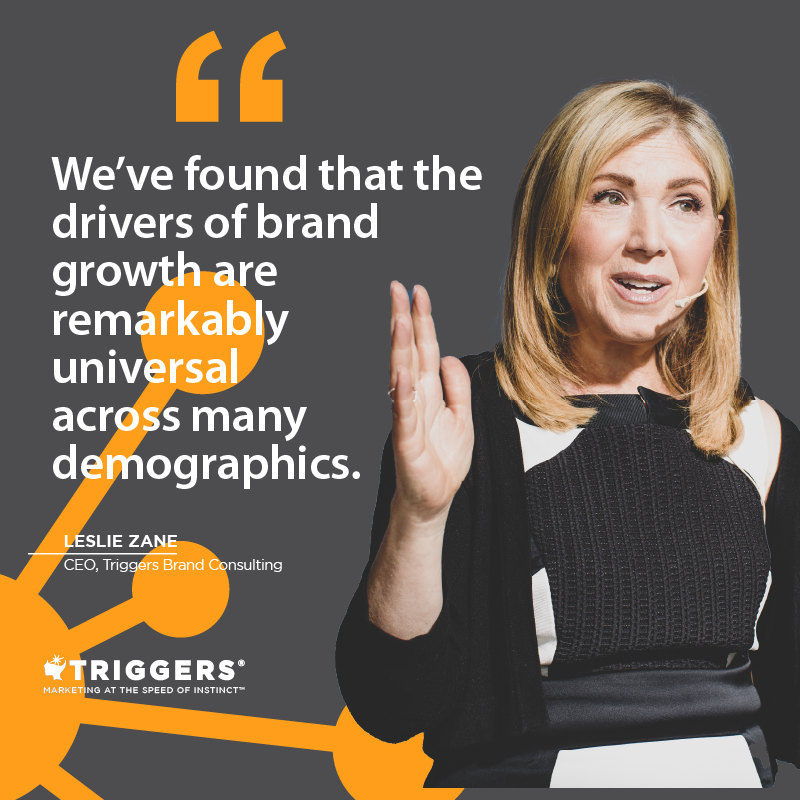Changing Brand Preference at the Speed of Instinct with the Brand Connectome
By: Leslie Zane
When a consumer chooses the same brand over and over again marketers call that loyalty. As the dogma goes, brand loyalty is difficult to overcome一the holy grail of brand success. Brand loyalty is such powerful magic that an entire industry and a metric to supposedly measure it gained popularity in the early 2000s: Net Promoter Score.
The problem with the Net Promoter Score is that the true drivers of brand preference are mostly hidden from view and this score does nothing to reveal them.
The definition of loyalty is faithfulness or allegiance. Loyalty theory, in consumer behavior, is based on the mistaken idea that the buying decision is conscious. But that’s not really what’s going on. When a shopper in the grocery aisle chooses the glossy orange tub of Tide Pods over the calming green of Gain, the driver of that decision is what we call Instinctive Brand Preference, not loyalty. This is the opportunity marketers should be focused on: changing brand preference at the instinctive level, where most habitual choices are made.
Behavioral science has shown us that almost all habitual buying experiences are made at the unconscious level, and yet the marketing industry is still largely focused on tactics that address conscious decision-making.
Nearly every company we work with at Triggers® Brand Consulting comes to us with the same problem: They’ve spent millions attempting to understand customer behavior and preference with little results. Robust, sustainable brand growth remains frustratingly elusive. Even with big data, social listening, and the full-time consumer connection of the internet age, no one seems to completely understand what’s happening. So, in an attempt to quantify the mercurial, companies have come to rely on one metric一the Net Promoter Score.
Unfortunately, the Net Promoter Score has major problems. It’s based on an overly simplistic survey and yet relied upon with stubborn dogma by over two-thirds of the Fortune 500. As we all know after the polling and survey failures of modern elections: What people say and what they do are not the same thing. It’s not that the consumer means to deceive the poor surveyor, it’s simply that consumers can’t tell you why they buy; that’s because their decisions are driven by instinctive brand preferences, not conscious decisions.

It is very common for brands to come to us with high Net Promoter Scores and declining growth. The Wall Street Journal reported on this phenomenon when they noticed almost no companies, no matter their growth trajectory, report a drop in NPS.
So, if the much-revered Net Promoter Score doesn’t work to measure consumer loyalty and predict brand stability and growth, what does?
Enter the Brand Connectome®.
The Brand Connectome® maps a complex set of unconscious memories and associations connected to a brand that cannot be measured by a single number.
Like a game of monopoly, the brand with the most territory usually wins. The health of a brand comes down to whether its positive associations in the brain are more vast than its competitors.
A brand’s growth potential isn’t measured by a metric. It’s guided by a map. The Brand Connectome® is behavioral science applied to a tool marketers can actually use.
Most modern marketers are familiar with Daniel Kahneman’s Nobel Prize-winning work showing how the human mind makes instant decisions using cognitive shortcuts that originated in our primitive brain. But, a decade after Thinking Fast and Slow became the favorite read in the C-suite few have figured out how to actually apply what we learn from behavioral science theory to their marketing goals.
When Triggers® was first established, we didn’t realize that we were practicing applied behavioral science. But as the Brand Connectome® tool began to emerge as a way to map instinctive brand preference, we began to understand what a revolutionary tool this was. In work with the world’s most iconic brands over the past 25 years, we’ve been able to examine these cognitive shortcuts. We’ve learned how easy it is to make them grow and change. As we shared in Knowledge at Wharton, this understanding has resulted in billions of dollars in incremental brand growth for our clients over the past two decades.
Navigating the Brand Connectome® to avoid the Net Promoter score problems
As with all maps, the Brand Connectome® requires a cartographer to document the hundreds of associations that exist in the consumer’s mind about your brand. There are always both positive and negative associations in your prospective consumer’s mind that don’t show up in traditional research. These must be uncovered in order to diagnose what is holding back the growth of your brand.
One of the welcome surprises, for most marketers that work with the Brand Connectome®, is that the ultimate drivers of a brand are far more convergent than modern marketing might suggest.
In an era of hyper-segmentation which can create a lot of additional work and cost, we’ve found that the drivers of brand growth are remarkably universal across many demographics.
When marketers discover this, the practical implications are huge. When a brand understands its Connectome® and its competitor’s Connectome® the instinctive barriers and drivers of growth become clear. Net Promoter Score becomes less alluring, as it becomes obvious that the greatest opportunity lies not with existing customers but with changing the instinctive brand preference of competitive users.
In fact, every brand that is facing growth challenges today, from Kohl’s to Victoria’s Secret, has instinctive barriers– negative associations that must be removed before they become entrenched. The problem is that they don’t show up in traditional research and, because such companies spend more time with existing customers than with their Growth Target, they often don’t learn about them until it’s too late.

The next logical question is: How does a brand grow or change its Connectome?
This process is much simpler than the hyper-segmented environment of modern marketing would have marketers believe. It begins with growing the brand in your Growth Target’s memory. To do this, the brand must:
- Keep positive associations that are already present in the minds of prospective customers.
- Stop and/or undo negative associations the brand has accumulated over time.
- Add new positive associations that are most important for the Growth Target.
By following these three steps, positive associations start to overtake negative ones and a shift occurs. Your brand takes up more positive real estate in the brain and becomes the new instinctive choice.
Even if Net Promoter Score were an accurate measure of loyalty, even if it could tell a marketer how to motivate their customer base further, it still would not address the key to sustainable brand growth: Competitive users.
Far too many companies still rely on the thoroughly debunked idea that focusing on current customers is the key to growth. It’s not. Over time, marketing spend aimed at existing users declines in value, and the brand declines with it. Once a marketer understands how easy it is to shift customer behavior一how to move competitive users at the speed of instinct一they realize that new users are a much more lucrative and reliable strategy for growth.

